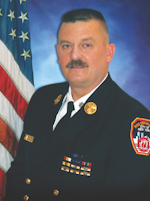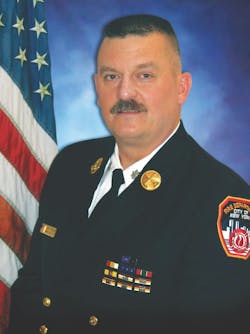Different departments position their officers in different locations while they operate at fires and emergencies. The conditions at the scene also might dictate where an officer might operate.
Concurrent with hydrant work
A basic engine company operation that every officer should have a solid handle on is the attack hoseline. There are dozens of ways that engine companies pack, stretch and operate hoselines. From the start, we can look at the stretching of the line from the apparatus.
Many engine companies designate one firefighter as the nozzle position, who selects and physically grabs the nozzle and pulls the line off of the apparatus. Seems rather basic, but there are variations. Other engine companies that are staffed with a driver, an officer and a single firefighter in the crew compartment have a different procedure. These companies lay a supply line into every scene. This requires the apparatus to stop at the hydrant, where the firefighter gets off, pulls the supply line from the hosebed along with the hydrant kit, tests the hydrant, makes the connection with the supply line, communicates with the driver and turns the hydrant on when instructed. Only then do they follow the hoseline in the street to the apparatus in front of the involved building.
Who stretches the attack hoseline while the firefighter works at the hydrant? The officer, who also makes the call for water and, perhaps, even begins the fire attack until the firefighter arrives, when the nozzle might or might not be passed off.
Elevated-stream oriented
Another operation where the company officer might be found concerns the use of the tower ladder as an elevated stream—in other words, a ladder truck that has a basket where members stand and operate the basket-mounted stream. Sometimes, one or two firefighters are positioned in the basket, but is that where the truck officer will be?
Some departments’ procedures assign the officer to be in the basket for this operation. Others that have light staffing—for example, a driver, an officer and a single firefighter—might require the officer to work with a firefighter in the basket. Still others allow the officer to supervise from a ground position.
Search
Another truck company tactic for which the officer’s position might vary is search operations at structural fires. This, too, is dependent on staffing at times.
If a truck company arrives at a house fire with a crew of five or six, the officer might enter with a firefighter as a two-person search crew. The other firefighters might be assigned other duties or enter as a second search team. These two teams might search on the same floor or area, which works well, but this requires the officer to supervise the firefighter who is searching with the officer and the firefighters who are working elsewhere. Is this acceptable? It is, but a single officer can’t be physically with every member who arrives. Supervision often must be accomplished via radio.
Supervision, safety & command
Numerous other tactics and operations—forcible entry, confined-space operations and extrication, for example—are conducted by fire companies under the leadership and supervision of a company officer. The location and duties of the officer will be varied and flexible. With sufficient staffing, the company officer shouldn’t be the person who, let’s say, works the tools for forcible entry if there are firefighters available to do that. A company officer at a roof operation shouldn’t operate a saw if firefighters are present and available for that assignment.
Such company officers’ primary jobs are supervision, safety and command. Those duties can’t be conducted properly if the officer is forcing a door or cutting a roof.

John J. Salka Jr. | Battalion Chief
JOHN J. SALKA JR., who is a Firehouse contributing editor, retired as a battalion chief with FDNY, serving as commander of the 18th battalion in the Bronx. Salka has instructed at several FDNY training programs, including the department’s Probationary Firefighters School, Captains Management Program and Battalion Chiefs Command Course. He conducts training programs at national and local conferences and has been recognized for his firefighter survival course, “Get Out Alive.” Salka co-authored the FDNY Engine Company Operations manual and wrote the book "First In, Last Out–Leadership Lessons From the New York Fire Department." He also operates Fire Command Training, which is a New York-based fire service training and consulting firm.






